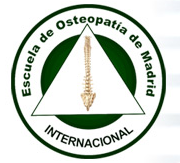Could Carbon Monoxide Protect Against Anesthesia-Induced Neuroapoptosis?
Basic science research suggests a promising, if surprising, method to protect against anesthesia-induced developmental neurotoxicity: subclinical carbon monoxide (CO) inhalation, according to a report and accompanying editorial published in the June 2014 issue of Anesthesia & Analgesia, the official journal of the International Anesthesia Research Society (IARS).
Low concentrations of CO limit apoptosis after isoflurane exposure in immature mice, through a mechanism of cytochrome c peroxidase inhibition, according to a recent paper by Drs Ying Cheng and Richard J. Levy of Children's National Medical Center, Washington, DC.
In a new editorial, Dr Vesna Jevtovic-Todorovic of University of Virginia Health System, Charlottesville, discusses the prospect of using CO -- a potentially lethal gas -- to protect the brains of infants and children during anesthesia and surgery. She writes, "The major advance provided by improved understanding of anesthetic-induced neurodegeneration is the potential to design clinically attainable methods to protect against anesthesia-induced developmental neurotoxicity."
Carbon Monoxide Reduces Brain Cell Apoptosis
Copies of the original research paper and editorial are available at this week's IARS 2014 Annual Meeting and International Science Symposium in Montreal.
In their study, Cheng and Levy found that isoflurane increased brain cell apoptosis in mouse pups, in association with increases in cytochrome c peroxidase activity and cytochrome c release. However, the increases in apoptosis as well as the cytochrome c changes were significantly reduced with concomitant exposure to "subclinical" levels of inhaled CO.
The findings may have implications for ongoing efforts to protect developing brains from possible damaging effects of anesthetic agents. In her editorial, Dr Jevtovic-Todorovic summarizes the evidence on anesthesia-induced neurotoxicity, with morphologic changes associated with later cognitive impairments. She writes, "There is urgency to improve our understanding of the mechanisms responsible for the neurotoxicity so that the most effective strategies can be introduced into clinical practice."
Funding research to improve the safety of pediatric anesthesia is the objective of the SmartTots initiative, sponsored by the IARS in partnership with the FDA. Dr Jevtovic-Todorovic is a member of the SmartTots Scientific Advisory Board.
Insights into Mechanism of Anesthesia-Induced Neurotoxicity
Based on the report by Cheng and Levy, isoflurane-induced up-regulation of cytochrome c peroxidase activity may be the first step in a cascade of events leading to neuroapoptotic degeneration. In their experiments, a 5 ppm concentration of inhaled CO led to significant reduction in markers of apoptosis -- without causing a carboxyhemoglobin levels known to be harmful in humans.
A 100 ppm concentration of CO led to an additional decrease in isoflurane-induced apoptosis, but with higher carboxyhemoglobin levels. "Nevertheless, the authors claim that both low (5 ppm) and higher (100 ppm) concentrations of CO should be considered subclinical and not harmful," Dr Jevtovic-Todorovic writes.
Dr Jevtovic-Todorovic acknowledges that the concept of using carbon monoxide as a protective agent "may seem extreme," based on the devastating effects of CO asphyxia. She also notes some important limitations of the scientific evidence so far -- particularly the lack of data on whether CO protects against isoflurane-induced cognitive impairment. She concludes, "This study addresses an important issue in developmental neurobiology and moves us a step closer to understanding the pathways responsible for anesthesia-induced neuroapoptosis."
Story Source:
The above story is based on materials provided by International Anesthesia Research Society (IARS). Note: Materials may be edited for content and length.
Journal References:
- Vesna Jevtovic-Todorovic. Good Gas, Bad Gas. Anesthesia & Analgesia, 2014; 118 (6): 1160 DOI: 10.1213/ANE.0000000000000235
- Ying Cheng, Richard J. Levy. Subclinical Carbon Monoxide Limits Apoptosis in the Developing Brain After Isoflurane Exposure. Anesthesia & Analgesia, 2014; 118 (6): 1284 DOI: 10.1213/ANE.0000000000000030
SD










 Master PCMH Criteria with Upcoming Webinars
Master PCMH Criteria with Upcoming Webinars







 The American Osteopathic Association (AOA) is the representative organization for the over 70,000 osteopathic physicians (DOs) and 18,000 osteopathic medical students in the United States. The organization promotes public health, encourages scientific research, serves as the primary certifying body...
The American Osteopathic Association (AOA) is the representative organization for the over 70,000 osteopathic physicians (DOs) and 18,000 osteopathic medical students in the United States. The organization promotes public health, encourages scientific research, serves as the primary certifying body...










 8:58
8:58
 Daniel Enriquez de Guevara
Daniel Enriquez de Guevara













.jpg)


















0 comentarios:
Publicar un comentario